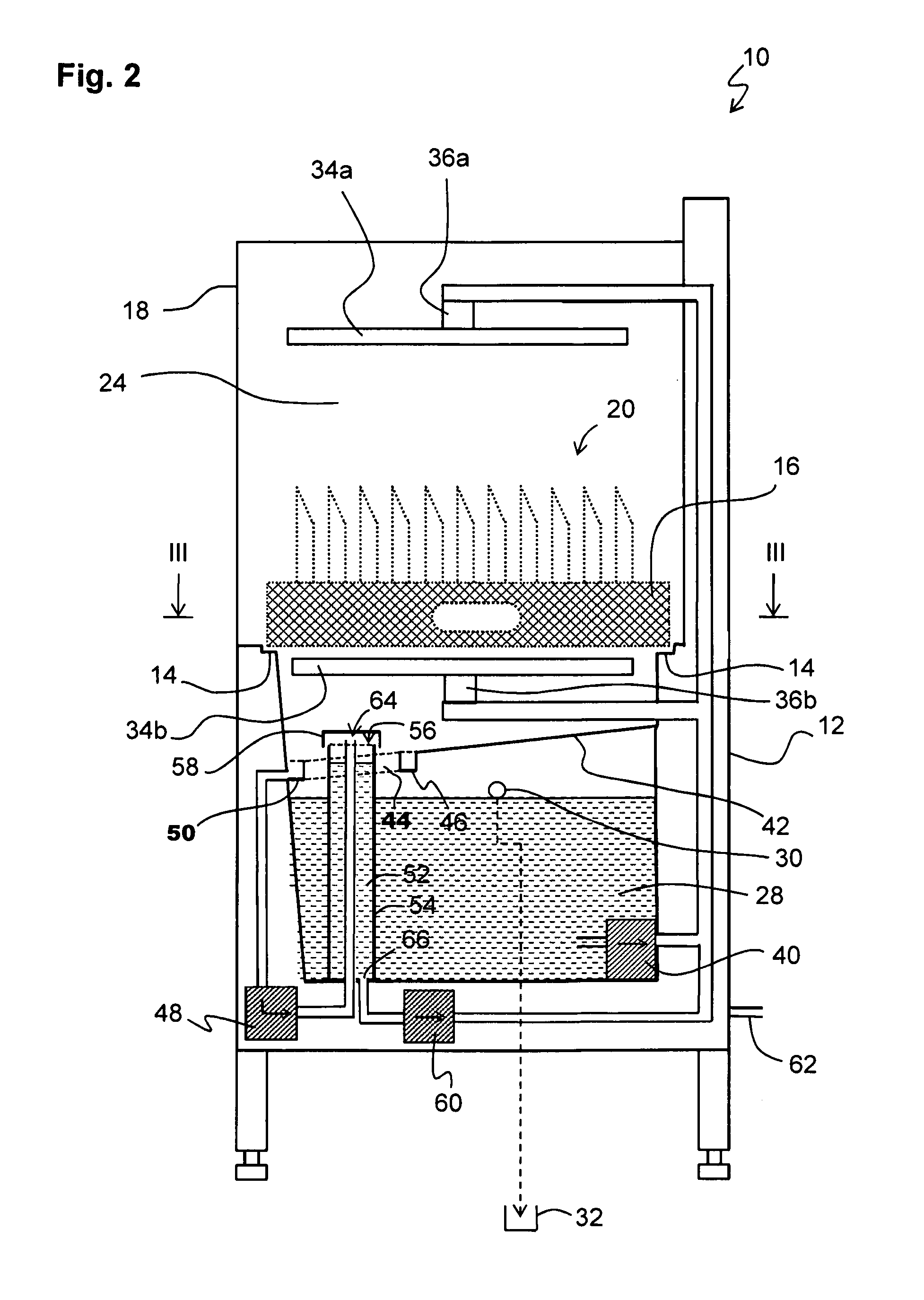Dishwasher, and process for rinsing of wash items
a technology for washing dishes and washing items, applied in the field of dishwashing machines, can solve problems such as operating costs, and achieve the effects of reducing the consumption of rinsing liquid, reducing the amount of rinsing liquid, and increasing the accuracy
- Summary
- Abstract
- Description
- Claims
- Application Information
AI Technical Summary
Benefits of technology
Problems solved by technology
Method used
Image
Examples
Embodiment Construction
[0019]FIG. 1 shows an example of an embodiment of a dishwasher for the washing and rinsing of wash items. The dishwasher 10 has a frame 12, which is provided with lips 14 (FIG. 2) arranged to support a wash basket 16 of standard 500 mm width. A raisable and lowerable hood 18 is arranged to, in raised position (unbroken line), allow the wash basket 16 containing soiled wash items 20 to be introduced into the machine 10 via a hood gap 22 and placed on the lips 14. In the lowered position (dashed line), the hood 18 is arranged to shut tight against the frame 12, and thereby form a closed wash chamber 24 (FIG. 2). The hood 18 is arranged to be raised and lowered with a control member 26.
[0020]FIG. 2 is a sectional view of the dishwasher 10. The machine 10 is shown with the hood 18 in the lowered position. The frame 12 comprises a wash tank 28, which contains washing liquid in the form of, for example, water mixed with detergent, up to a level determined by an overflow pipe 30. The overf...
PUM
| Property | Measurement | Unit |
|---|---|---|
| time | aaaaa | aaaaa |
| washing liquid | aaaaa | aaaaa |
| circular-cylindrical shape | aaaaa | aaaaa |
Abstract
Description
Claims
Application Information
 Login to View More
Login to View More - R&D
- Intellectual Property
- Life Sciences
- Materials
- Tech Scout
- Unparalleled Data Quality
- Higher Quality Content
- 60% Fewer Hallucinations
Browse by: Latest US Patents, China's latest patents, Technical Efficacy Thesaurus, Application Domain, Technology Topic, Popular Technical Reports.
© 2025 PatSnap. All rights reserved.Legal|Privacy policy|Modern Slavery Act Transparency Statement|Sitemap|About US| Contact US: help@patsnap.com



